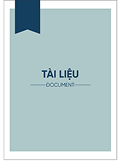Tài liệu
Financial development and institutional quality among emerging economies

Xem mô tả
156
Xem & Tải
4
Tóm tắt
Purpose – This study examines how institutional quality influences variability in financial development among economies in Sub-Saharan Africa (SSA). Design/methodology/approach – Empirical estimations verifying various relationships are performed using the limited information maximum likelihood (LIML) estimation technique. Findings – The results suggest that institutional quality enhances the pace of financial development among economies in the sub-region all things being equal. In a further micro-level analysis where components of institutional quality index are examined separately, the study’s results suggest that effective governance, regulatory quality, rule of law and accountability tend to have a significant positive impact on financial sector development. Research limitations/implications – Findings of the study suggest that policies geared towards improving governance and regulatory institutions can augment development of the financial sector among economies in SSA; governments and policymakers are therefore encouraged to resource noted institutions to play effective roles for the development of the financial sector. Originality/value – Compared to related studies, this study reorients existing paradigm, which emphasizes the role of governance and institutional variables in the economic growth discourse. The authors’ empirical inquiry rather focuses on how governance and institutional structures influence regional financial development dynamics. Specifically, this study differs from most macro-level studies found in literature because it examines the impact of hitherto unexamined governance and institutional variables on financial development among economies in SSA
Mô tả
Economy and finance
Tác giả
Rexford Abaidoo
Elvis Kwame Agyapong
Người hướng dẫn
Nơi xuất bản
Nhà xuất bản
Kinh Tế Quốc Dân
Năm xuất bản
2022
ISBN
2632-5330
ISSN
Từ khóa chủ đề
Financial development, Institutional quality, Limited information maximum likelihood, , Macroeconomic uncertainty
Trích dẫn
Bộ sưu tập
Tệp tin

JED-08-2021-0135.pdf
D:\NEU_DSpace\tapchitienganh
Dung lượng: 189.35 KBĐịnh dạng: pdf
Lượt xem: 0 Lượt tải: 4
